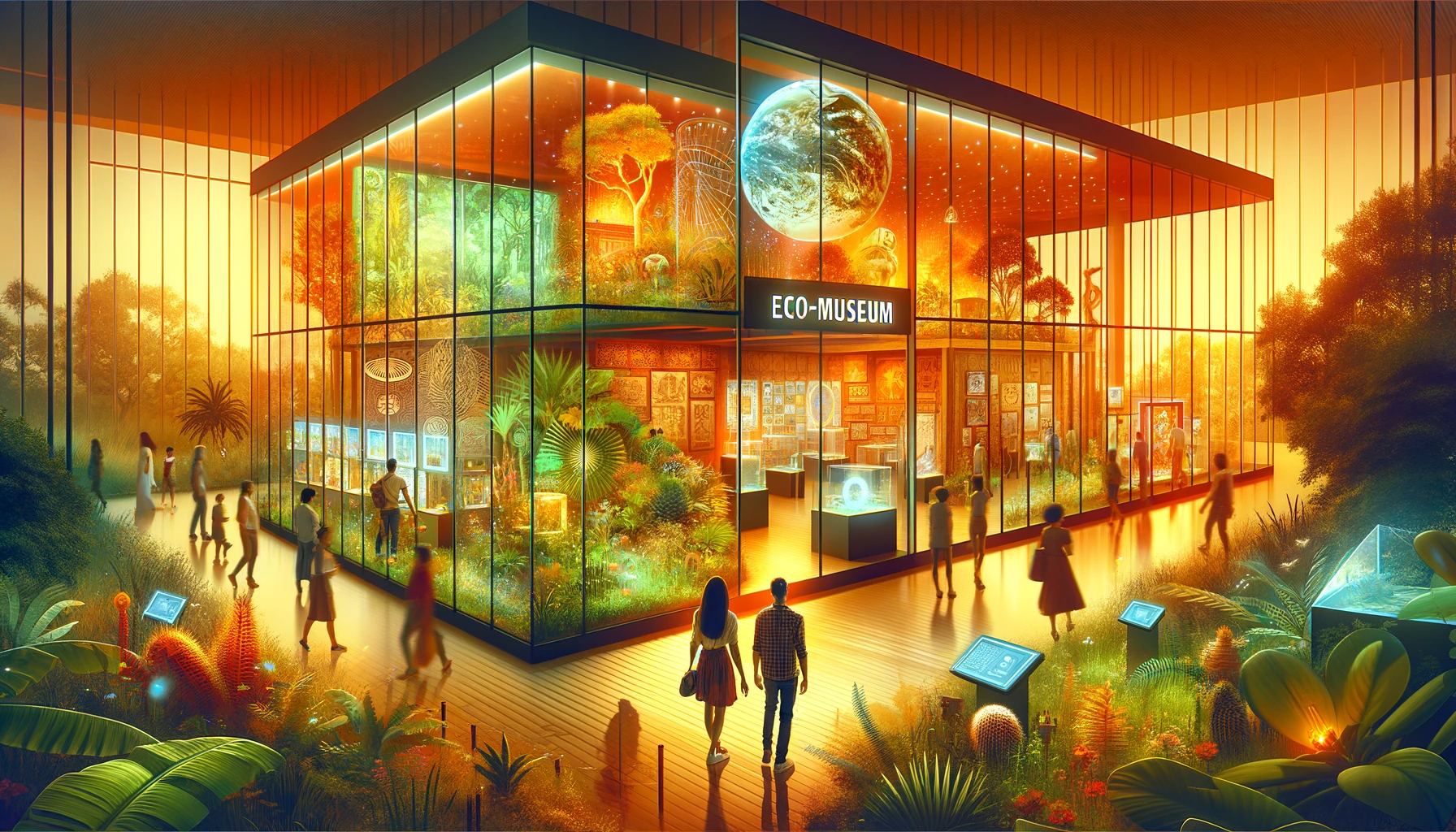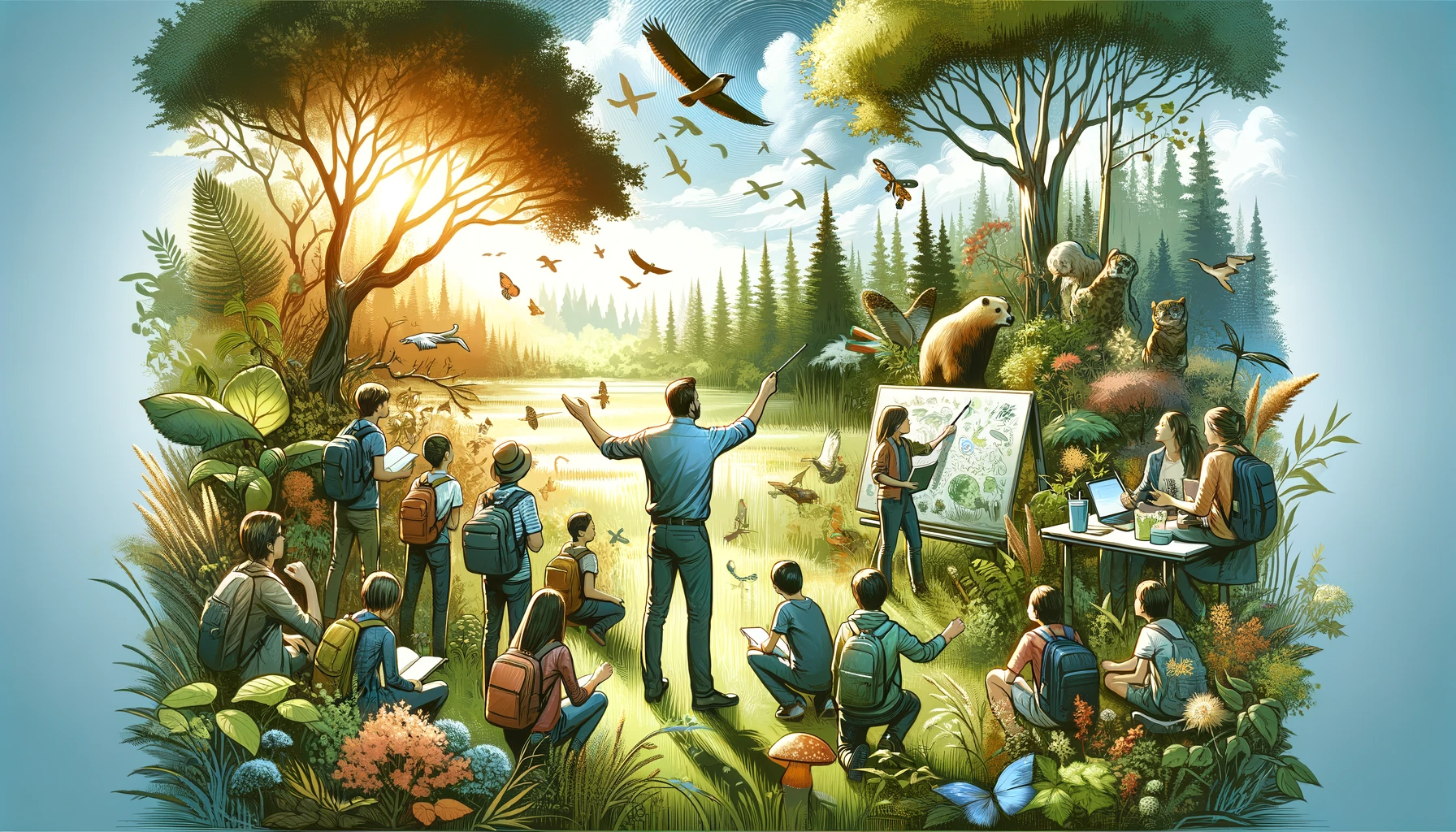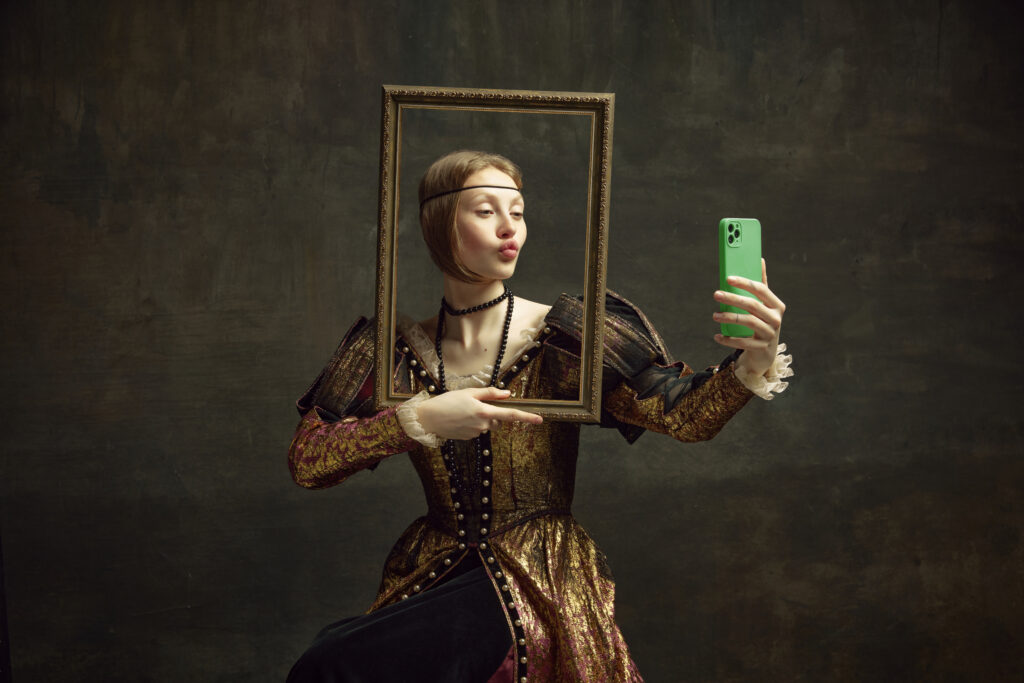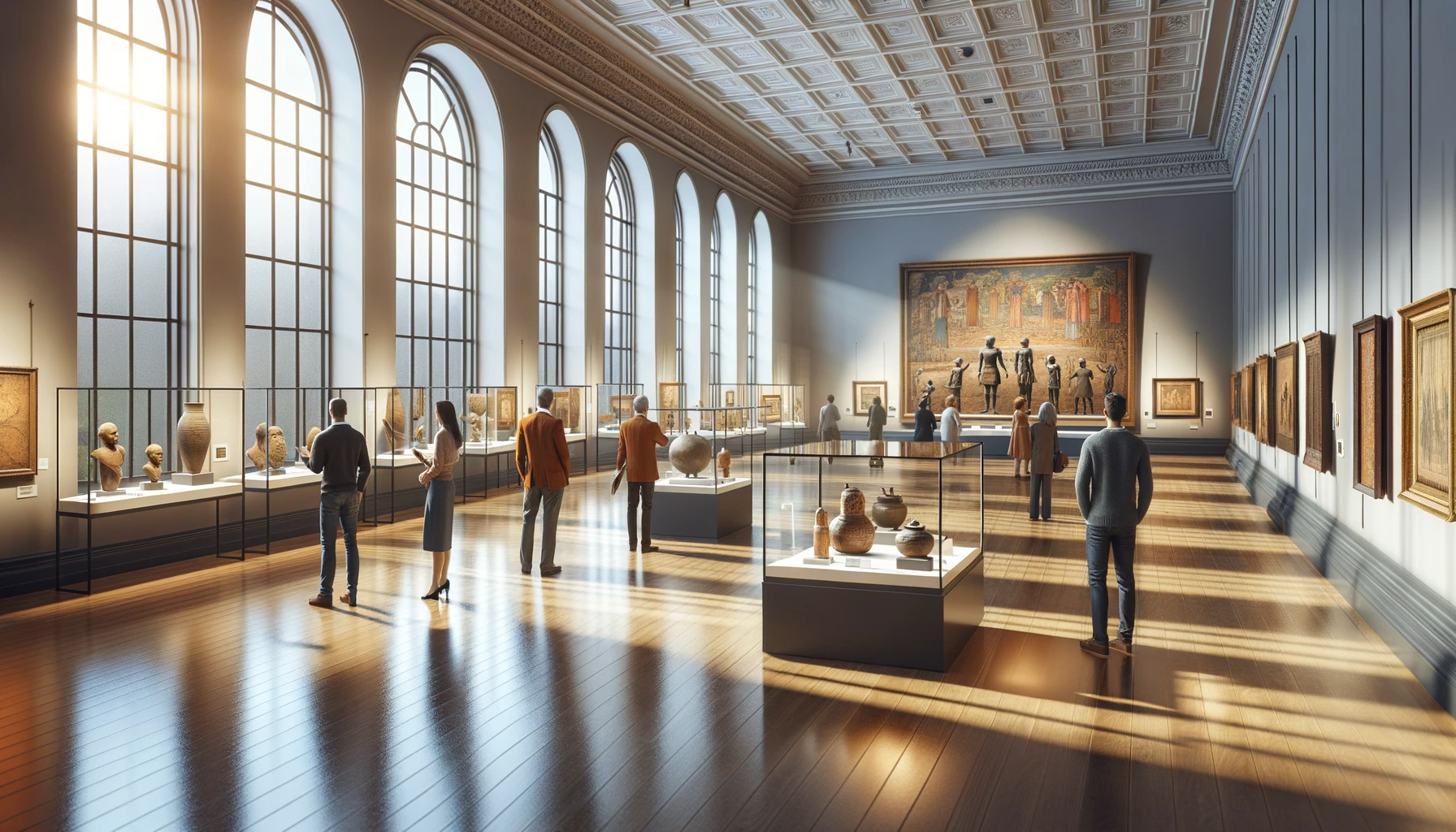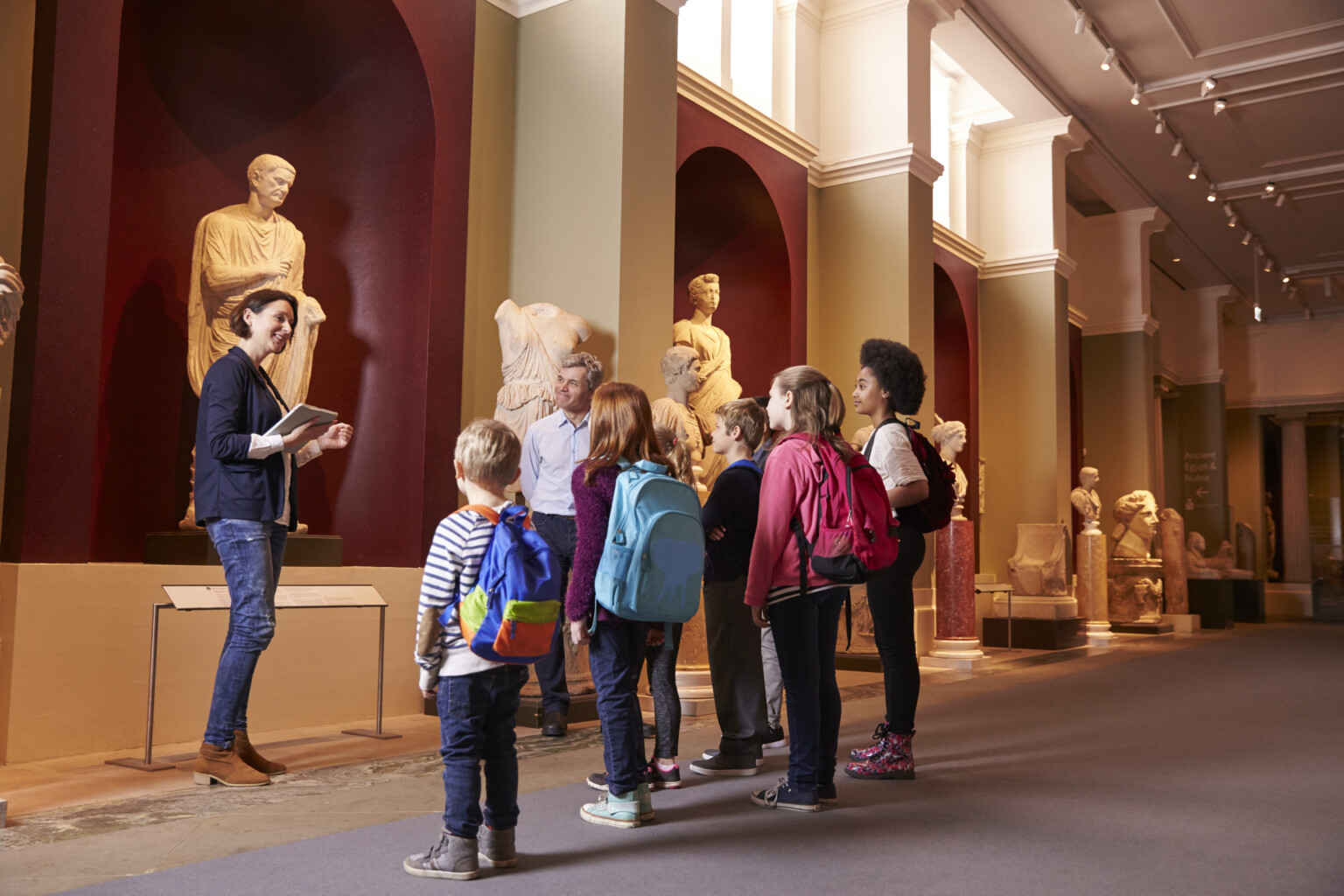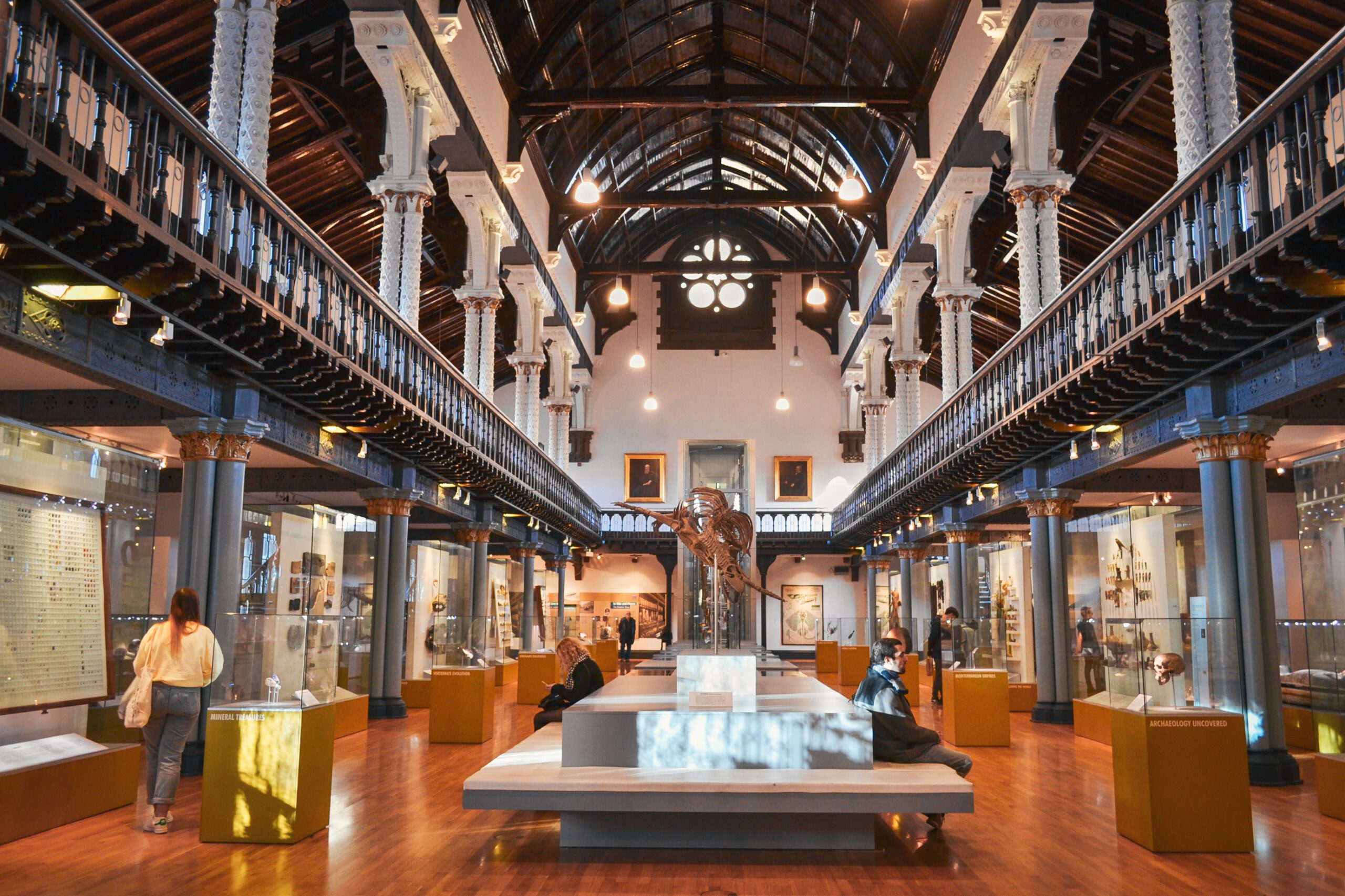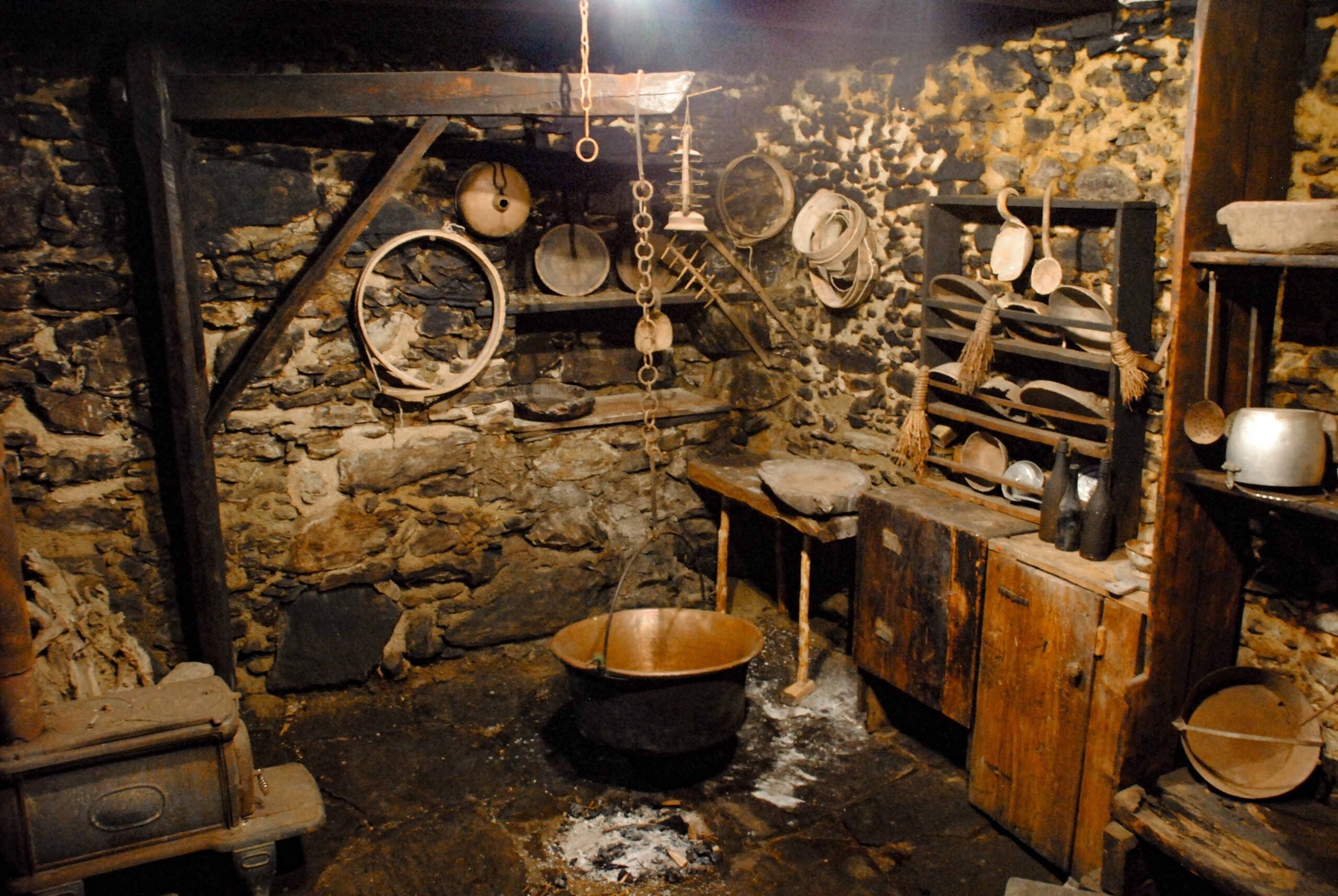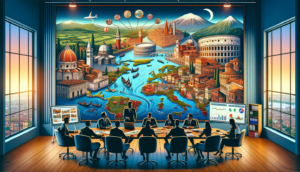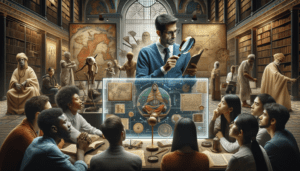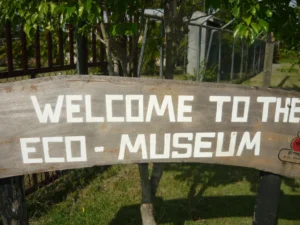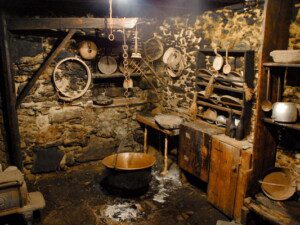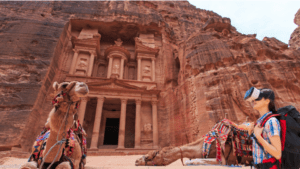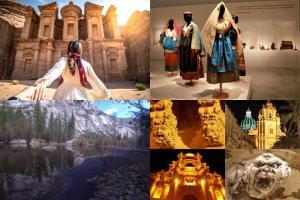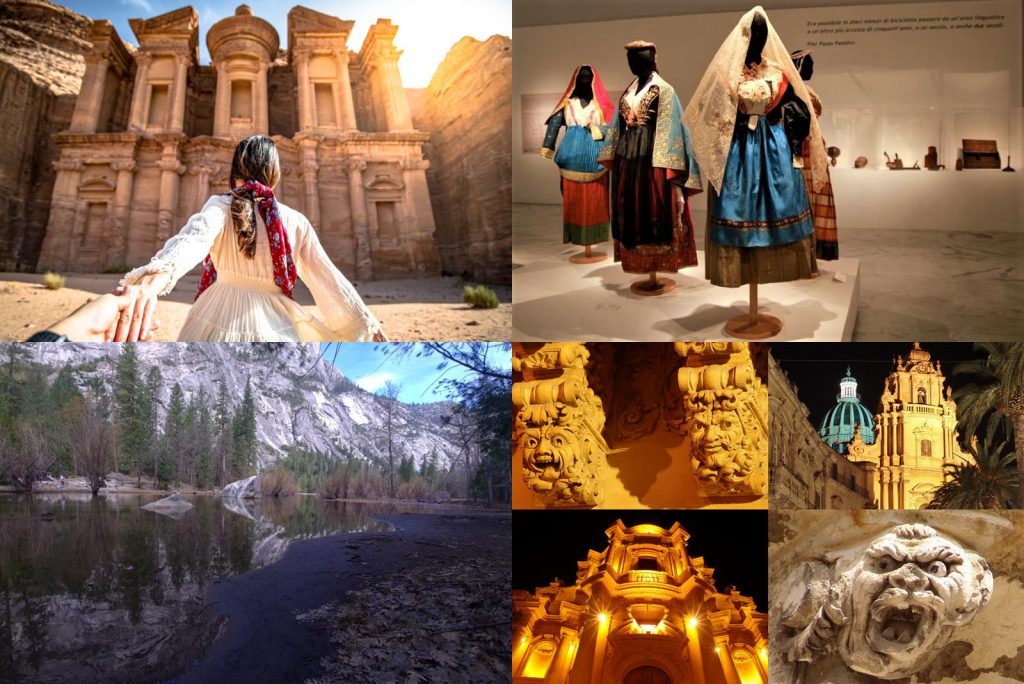Museum Director: Reference scheme
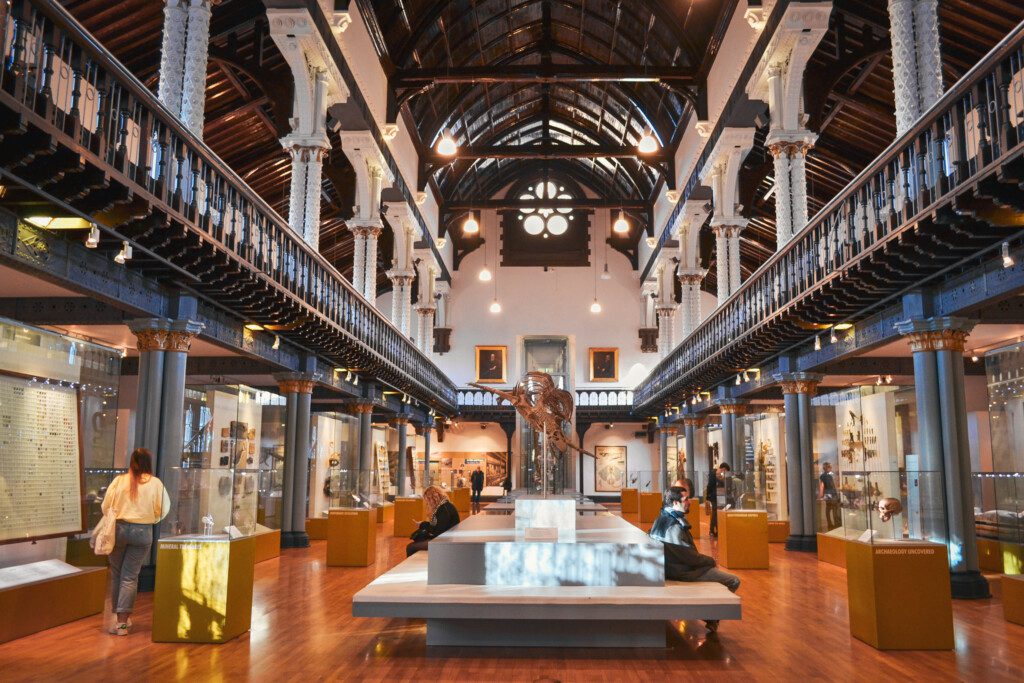
Beta version
Scheme C) Unregulated profession built without regulatory references.
Introduction to the Beta version
Reference scheme developed in accordance with the standard: SP/TAH-CF: Professional Standard (SP) 3.0 based on the professional skills indicated in the Framework of Competences of Tourism, Arts and Cultural Heritage. The scheme is created in accordance with the European Qualification Framework (EQF), Recommendations 2009/C 155/02 (European Credit System for Vocational Education and Training - ECVET) and the model called "Skills Cycle".
Furthermore, for some parts the scheme also takes inspiration from the following documents:
- CEN Guide 14 “Guidelines for standardization activities on the qualification of professions and personnel.
- APNR Scheme (Unregulated Professional Activities) adopted by UNI for technical standardization in the APNR area
Note: the following documents were also taken into consideration:
- Professionalism and essential functions of the Museum in the light of the reform of state museums (2017)
- Laboratory for the reform Contributions to the definition 1. 1. of the organizational structure of museums 2. of the tasks and activities assigned to the functional areas of ICOM Italia (2016)
- ICOM ICTOP European Manual of Museum Professions (2008)
- National charter of museum professions drawn up by ICOM (2008)
- ICOM Curricula guidelines for museum professional development (2000)
- Ministerial Decree 244 of 20/05/2019 of the MIBACT (Attachments)
The scheme is subjected to an initial public survey available to all stakeholders in the cultural tourism supply chain in order to collect comments and contributions useful for improving its contents. All interested parties are invited to improve the scheme by sending their contributions to info@aiptoc.it
Description
PPC11/P1: Museum Director (EQF Level VII)
The Museum Director is a professional figure, with a high intellectual content and complexity, responsible for guiding and managing the museum in line with the mission established by the owner body. This figure can operate in both public and private contexts, or as an independent professional, also offering specialist consultancy. The Museum Director has a deep understanding of the Cultural Heritage represented in the museum's collection and uses his skills to ensure the protection, conservation, valorisation and promotion of this heritage.”
Standards of Reference
- European Qualification Framework (EQF)
- Recommendation 2009 / C 155/02 (European Credit System for Vocational Education and Training - ECVET)
- Law 4/2013 relating to non-regulated professions
Specific tasks and activities
In order to take into account, in the assignment of tasks, the following distinction was made:
In the museum context, it is essential to distinguish between two key roles: 'Accountable' and 'Responsible'. Although these terms have distinct meanings in English, in Italian they are often translated as a single term, 'Responsible', causing potential ambiguity.
- Ultimately responsible (Accountable): is the figure who holds full responsibility for the results obtained and is responsible for the consequences of the decisions made.
- Operational Manager (Responsible): is the figure who manages the operational aspect, i.e. the person who puts decisions and actions into practice.
It is possible to have multiple 'Operational Managers' for a single function, but there will always be a single 'Ultimate Manager'. Depending on the size and structure of the museum, some functions may be performed by the same person. For example, the Director could hold both the role of 'Accountable' and 'Responsible' for different activities. In this scenario, the Director should possess the necessary skills for each function and, if required, the recognitions required by law (e.g. Restorer, Security Manager, Privacy Manager, etc.).
Note: for the tasks for which he is coordinator, supervisor or ultimately responsible (Accountable), the Director can avail himself of the support of other museum professionals (Cataloger, Educator, Restorer, Conservator, Communicator, Administrative Manager, etc.)
Functional Areas
- A1. Research, Management and Care of Collections Area: The Area is assigned the functions of care and management of the collections, and in particular of registration, conservation, maintenance, restoration, movement, documentation, sorting, research and scientific communication. The area is divided into:
-
- A1.1 Studies and Research
- A1.2 Care and management of collections
-
- A2. Public Services Area: The Area is responsible for welcoming the public, supervising the exhibition spaces, developing accessibility to the museum and collections, planning educational and didactic activities, information, communication and marketing. The area is divided into:
-
- A2.1 Museum Services and Activities
- A2.2 Marketing and communication
- A3.3 Training and Education
-
- A3. Administration Area: The Area is assigned the functions of administration and management of human, financial and instrumental resources, legal affairs, ordinary functioning, management control, assistance to the bodies of the institution
- A4. Structures, fittings and safety: The Area is assigned the functions of managing the structures and systems, the safety of the collections, personnel and the public, the preparation, creation, maintenance and adaptation of the displays.
Basic and transversal tasks
- TB.1) Identify, analyze and document museum cultural heritage
- TB.2) Define and plan the museum itinerary
- TB.2.1): Analyze the reference context
- TB.2.2): Design museum itineraries and services
- TB.3) Guarantee the coordination of human resources
A1. Research, Management and Care of Collections Area
A1.1 Studies and Research
-
-
-
- TA1.1) Carry out study and research activities in the field of museology and in disciplines relating to the museum collection.
-
-
A1.2 Care and management of collections
-
-
-
- TA2.1 Ultimately responsible for the organization, conservation and management of museum assets
-
-
This task involves at least the following activities:
-
-
- A1.2.1.1) Define the policies for increasing and acquiring museum assets
- A1.2.1.2) Be ultimately responsible for the organization of the collections
- A1.2.1.3) Be ultimately responsible for the management of the museum's documentary heritage
- A1.2.1.4) Supervise the conservation of museum assets
- A1.2.1.5) Coordinate the internal and external movement activities of museum assets
- A1.2.1.6) Coordinate activities relating to the setup and presentation of museum assets
- A1.2.1.7) Coordinate the inventory and cataloging of collections
- A1.2.1.8) Supervise the ordinary maintenance, conservation and restoration plans of museum assets
-
A2. Public Services Area
A2.1 Museum Services and Activities
-
-
-
- TA2.1.1) Plan the activities and procedures of museum services and activities
- TA2.1.2) Ultimately responsible for the correct performance of museum services and activities
- TA2.1.3) Ultimately responsible for compliance with applicable current legislation
- TA2.1.4) Coordinate monitoring activities and evaluation of the quality of museum services
- TA2.1.5) Coordinate initiatives to improve museum services (continuous improvement)
-
-
A2.2 Marketing and communication
-
-
-
- TA2.2.1 Ultimately responsible for Marketing and Communication activities
-
-
This task involves at least the following activities:
-
-
- A2.2.1) Define the marketing and promotion strategies for museum activities
- A2.2.2) Coordinate marketing activities aimed at expanding the visitor target
- A2.2.3) Maintain relations with external authorities, the media and other cultural institutions
- A2.2.4) Coordinate activities related to the museum's Communication Plan
- A2.2.5) Supervise communication and museum promotion material
- A2.2.6) Supervise the documentation and communication systems (including websites and social networks) of the museum
- A2.2.7) Coordinate the planning and implementation of scientific communication activities
-
A2.3 Training and Education
-
-
- TA2.3.1) Ultimately responsible for training and education activities in the field of museology and in disciplines relating to the museum collection
-
A3. Administration Area
- TA3.1) Ultimately responsible for the management of economic resources
- TA3.2) Ultimately responsible for human resources management including aspects related to staff training and updating
A4. Structures, fittings and safety area
- TA4.1) Ultimately responsible for the maintenance of infrastructures and equipment including those necessary for setups
- TA4.2) Ultimately responsible for the supervision of the exhibition spaces
Skills, Knowledge and Autonomy and Responsibility (Skills)
For each area, the main tasks and specific activities of the profession of Ecomuseum Director are indicated.
TB Basic and transversal tasks
Task TB.1) Identify, analyze, interpret and document the museum's cultural heritage
Skills TB.1
- SQ1: Analysis skills
- SQ2: Ability to synthesize
- SP105: Cultural Heritage relevant to the museum collection (Identify, analyze, document, relate, contextualize, develop historical-comparative relationships)
- ST5: Identify and apply the basic IT and telematic tools
- ST6: Identify and apply IT tools for communication
- ST11: Use information search tools
- SP94: Territorial context from a cultural and historical anthropological point of view (analyze, document, report)
- SP100: Local cultural identities (Identify, analyse, interpret, document, report)
- SP126: Interpretation Experience Paths (identify, analyze, document, report)
Based on the type of museum, the general skills indicated must be particularly in-depth in the specific sector to which they belong which can be, for example: Identifying, analysing, documenting, relating, contextualising, developing historical-comparative relationships, identifying the relevance and the historical context - cultural origin of museum assets belonging to one or more of the following (non-exhaustive list):
- SP29: Unesco Heritage
- SP30: Naturalistic Heritage
- SP31: Historical, Artistic and Archaeological Heritage
- SP32: Intangible Heritage
- SP33: Food and wine heritage
- SP53: Demoethnoanthropological heritage
- SP54: Paleoanthropological Heritage
Knowledge TB1
- KS352: Elements of Tangible and Intangible Cultural Heritage
- KS145: Document management principles, methods and techniques
- KS236: Museology and New Museology
- KS249: Interpretation of Cultural Heritage
- KS250: Lighthouse Convention
- KS263: Local cultural identities
- KT6: IT tools for online communication and research
General knowledge of Cultural Heritage must include both tangible and intangible assets and be particularly in-depth in the sectors relating to museum collections. Below is an illustrative and non-exhaustive list
- KTU Unesco Heritage
-
- KTU1: Unesco Conventions on Material Cultural Heritage
- KTU2: The World Heritage List (WHL)
- KTU3: UNESCO Institutions for Cultural Heritage
- KTU4: World Heritage sites at risk
- KTU5: The Proposal List of World Heritage
- KTU6: The procedures for the recognition of Unesco sites
- KTU7: Guidelines for drafting and implementing management plans
- KTU8: Models for the implementation of Management Plans
- KTU9: Sites on the World Heritage List
- KTU10: Unesco Global Biospheres and Geoparks
- KTU11: Creative Cities Network
- KTU12: Unesco Conventions on Intangible Cultural Heritage
- KTU13: The World List of Intangible Cultural Heritage
- KTU14: Other Programs for the protection and promotion of Cultural Heritage
- KTN Natural Heritage
-
- KTN1: Protected Natural Areas
- KTN2: Parks and Nature Reserves
- KTN3: Nature reserves
- KTN4: Natura 2000 network
- KTN5: Sites of Community Interest (SIC)
- KTN6: Special Protection Areas (SPAs)
- KTN7: Special Areas of Conservation (SAC)
- KTN8: The Wetlands
- KTN9: The Geosites
- KTN10: Management tools for protected natural areas
- KTN11: Landscape Plans
- KTN12: The environmental protection and supervisory bodies
- KTN13: Strategies for Biodiversity
- KTI Intangible Heritage
-
- KTI1: Demo-ethno-anthropological heritage (DEA)
- KTI2: Registers of Intangible Heritage
- KTI3: Religious Rites and Festivals (Celebrations)
- KTI4: Crafts, Knowledge and traditional working techniques (Knowledge)
- KTI5: Traditions and Oral Expressions (Expressions)
- KTI6: Performing Arts
- KTI7: Places of Memory and Symbolic Places
- KTI8: Places of Myth and Legends
- KTI9: Places of the Sacred
- KTI10: Places of historical events
- KTI11: Places of historical personalities and culture
- KTI12: Historical places of work
- KTI13: Places of the literary story
- KTI14: Places of television and film storytelling
- KTI15: Ethno-anthropological museum heritage
- KTI16: Ethnomusicological Heritage
- KTI17: Literary parks
- KTS Historical, Artistic and Archaeological Heritage
-
- KTS1: Archaeological Tourism
- KTS2: Parks and Archaeological Sites
- KTS3: Paleolithic, Mesolithic and sites of tourist interest
- KTS4: Neolithic, Metal Age and sites and sites of tourist interest
- KTS5: Main architectural styles
- KTS6: Tourist sites from the Greek and Roman times
- KTS7: Testimonies of Byzantine and Lombard civilization
- KTS8: Sites of tourist interest from the Norman period
- KTS9: Baroque and Rococo
- KTS10: Neoclassical Architecture
- KTS11: The Testimonies of Liberty
- KTS12: The historic villages
- KTS13: The Museum Heritage
- KTE Food and Wine Heritage
-
- KTE1: Typical products
- KTE2: Food and wine tourism
- KTE3: The quality certification of DOP, IGP and TSG food products
- KTE4: Traditional Agri-Food Products
- KTE5: Other forms of recognition of typical products
- KTE6: The wine roads
- KTE7: The production specifications
- KTE8: Organic products
- KTE9: Farmhouses
- KTE10: Quality rural and agri-food districts
Task TB.2) Define and plan the museum itinerary
Activity TB.2.1): Analyze the reference context
TB2.1 Skill
- SQ1: Analysis skills
- SQ10: Analyze the explicit, implicit and mandatory requirements (needs) of real and potential users
- SP1: Identify and evaluate the applicability of the rules for the protection and use of the Cultural and Landscape Heritage
- SP4: Identify and evaluate the applicability of the Tourism Legislation
- SP16: Perform SWOT Analysis
- SP24: Identify the Strategic Stakeholders
- SP47: Use research tools and methodologies
- SP73: Natural endogenous attractions (know, analyze)
- SP74: Endogenous cultural attractions (know, analyse)
- SP75: Induced Attractions (know, analyze)
- SP87: Identify and evaluate the applicability of the Environmental Protection and Sustainable Development Legislation
- SP92: Documentary Research (applying techniques and methodologies)
- SP94: Territorial context from a cultural and historical anthropological point of view (analyse, document, report)
- SP95: Identify and evaluate the applicability of legislation in the museum and eco-museum sector
- SP96: Identify and analyze the economic and social context of the territory
- SP100: Local Cultural Identities (Identify, Analyze, Interpret, Document)
- SP102: Knowing how to analyze the territorial context from a museum point of view
Knowledge TB2.1
- KQ33: Quality Management – Techniques for analyzing the requirements (needs) of interested parties
- KS3: Experiential Tourism
- KS4: Sustainable Tourism
- KS5: Accessible Tourism
- KS7: Cultural Tourism
- KS17: Integrated Tourism
- KS24: Destination Management Organization (DMO)
- KS27: Local tourism systems
- KS28: Institutions and Promotion of the territory
- KS39: The legislation for the protection and use of Cultural Heritage
- KS40: The criteria for the protection of cultural heritage
- KS41: The various levels of protection
- KS43: Landscape assets
- KS92: Supervisory and protection bodies
- KS121: Relations with institutions
- KS106: Tourism Legislation
- KS194: Local cultural endogenous attractions
- KS195: Territorial natural endogenous attractions
- KS196: Induced territorial attractions
- KS216: Principles of Sustainable Development
- KS223: Territorial context from a cultural and historical anthropological point of view
- KS232: Environmental Protection and Sustainable Development Regulations
- KS242: Regional legislation regarding the establishment, recognition and management of museums and ecomuseums
- KS245: National and regional museum/ecomuseum networks
- KS265: Territorial Bodies and Institutions
Activity TB.2.2): Design museum itineraries and services
TB2.2 Skill
- SQ1: Analysis skills
- SQ5: Planning skills
- SQ6: Programming skills
- SQ11 Design processes and services
- SQ12: Implement, document and classify core processes
- SQ14: Propose process changes to facilitate and rationalize improvements
- SP3: Evaluate the applicability of funding for the sector supply chain
- SP22: Identify and evaluate the applicability of Sector Policies
- SP25: Evaluating the applicability of Programs, Conventions and Institutional Acknowledgments
- ST14: Identify and apply Risk Management tools and models
- ST16: Identify and apply the Corporate Organizational Models
Knowledge TB2.2
- KQ1: Quality Management - The UNI EN ISO 9001 standard
- KQ22: Quality Management - Factors (dimensions) and quality indicators
- KQ11: Quality Management - Design and development;
- KQ23: Quality Management – The Service Charter
- KS50: Funding for the Tourism and Cultural Sector
- KS91: Theories and Models of Experiences
- KS93: Characteristics of Experiences
- KS95: Designing Experiences
- KS99 Risk Management
- KS110: Events: The Location
- KS111: Sustainability of Events
- KS188: The legislation relating to Authorizations and Permits regarding events
- KS198: Support services to the basic offer
- KS206: Competent services and authorities in the event of accidents or sudden illnesses
- KS236: Museology, Museography and New Museology
- KS249: Heritage Interpretation
- KS252: Planning and implementation of events on museum/ecomuseum themes
- KS266: Museum/ecomuseum design techniques and methodologies
- KS352: Heritage Interpretation Experience Centers (CEIP)
- KS356: Interpretative services in museum settings
- KS358: Design and Planning of Cultural Heritage Interpretation Routes
- KT5: Basic IT and telematic tools
- KT16: Corporate Organizational Models
Task TB.3) Guarantee the coordination of human resources
Skills TB.3
- SQ3: Organizational skills
- SQ4: Ability to control
- ST1: Ability to communicate
- ST2: Group management skills
- ST3: Conflict management skills
- ST12: Assign roles and tasks in management processes
Knowledge TB.3
- KQ5: Quality Management - The management of human resources
- KS104: Communication and Conflict Management
- KS105: Communication styles and effective communication
- KT2: Group management techniques
- KT3: Conflict Management Techniques
- KT12: Techniques and methodologies for human resource management
- KT24: Leadership and Group Psychology
- KS124: Cultural Management
A1. Research, Management and Care of Collections Area
A1.1 Studies and Research
Task TA1.1.1) Carry out study and research activities in the field of museology and in disciplines relating to the museum collection.
Skill TA.1.1.1
- SP43: Identify and evaluate the applicability of legislation on copyright and copyright
- SP47: Knowing how to use study tools and methodologies
- SP88: Knowing how to prepare studies, reports and scientific surveys related to one's reference sector
- SP89: Knowing how to develop and promote research projects related to one's reference sector
- SP90: Knowing how to coordinate or participate in scientific and editorial committees related to one's reference sector
- SP92: Documentary Research (applying techniques and methodologies)
- ST11: Use information search tools
Knowledge TA.1.1.1
- KS116: Research tools and methodologies
- KS130: Research planning methodologies in relation to one's reference sector
- KS217: Social Research Methodologies
- KS218: Documentary Research Techniques and Methodologies
- KS220: Research planning methodologies in relation to one's reference sector
- KT5: Basic IT and telematic tools
- KT6: IT tools for communication
- KT25: Legislation on Author's Rights and Copyright
Task TA1.2.1 Ultimately responsible for the organization, conservation and management of museum assets
The activities underlying this task may include:
- A1.2.1.1) Define the policies for increasing and acquiring museum assets
- A1.2.1.2) Be ultimately responsible for the arrangement of the collections
- A1.2.1.3) Be ultimately responsible for the management of the museum's documentary heritage
- A1.2.1.4) Supervise the conservation of museum assets
- A1.2.1.5) Coordinate the internal and external movement activities of museum assets
- A1.2.1.6) Coordinate activities relating to the setup and presentation of museum assets
- A1.2.1.7) Coordinate the inventory and cataloging of collections
- A1.2.1.8) Supervise the ordinary maintenance, conservation and restoration plans of museum assets
Skill TA1.2.1
- SP40: Know how to organize the spaces where museum services are carried out
- SP48: Use cataloging tools and methodologies
- SP51: Cultural Heritage relevant to the museum collection (evaluate the state of conservation in collaboration with the restorer and scientific experts)
- SP52: Evaluate the applicability of the protection constraints on Cultural Heritage
- SP103: Create databases relating to the relevant museum cultural heritage
- SP116: Define policies for the increase and acquisition of museum assets
- SP117: Use typologies and criteria for organizing and organizing the museum
- SP118: Coordinate inventory and cataloging activities of the collections
- SP119: Cultural Heritage relating to museum collections (know methods and techniques of handling and maintenance)
Knowledge TA1.2.1
- KS40: The criteria for the protection of cultural heritage
- KS41: The various levels of protection
- KS42: The problem of conservation and restoration, the Charters of restoration
- KS125: Techniques and Methodologies of museum arrangement and layout
- KS140: Techniques and methodologies of preventive conservation of cultural heritage
- KS145: Document management principles, methods and techniques
- KS166: National and international technical standards on cataloging
- KS236: Museology, Museography and New Museology
- KS269: Visual Communication
- KS270: Lighting technology
A2. Public Services Area
A2.1 Museum Services and Activities
Task TA2.1.1) Plan the activities and procedures of museum services and activities
Skill TA2.1.1
- SQ3: Organizational skills
- SQ5: Planning skills
- SQ7: Ability to produce improvement plans
- SQ13: Implementing Procedures and Operating Instructions for Quality
- SP40: Know how to organize the spaces where museum services are carried out
- SP41: Know how to organize the location and "staging" of your museum offer
Knowledge TA2.1.1
- KQ7: Quality Management - Planning and monitoring of the service
- KQ8: Quality Management - The procurement system
- KS102: Theater as a model for staging experiential offerings
- KQ4: Quality Management - System Documentation; the Manual; Procedures and Operating Instructions;
- KS101: Basic IT and Telematics
- KS186: Event Planning
Task TA2.1.2) Ultimately responsible for the correct performance of museum services and activities
Skill TA2.1.2
- SQ3: Organizational skills
- SQ4: Ability to control
- SP14: Contribute to the correct management of exhibition events on museum themes
- SP122: Contribute to the correct management of experiential events
- SP123: Contribute to the correct management of interpretive events
Knowledge TA2.1.2
- KQ9: Quality Management - Production and provision of the service;
- KQ10: Quality Management - Identification and traceability;
- KS1: Logistics
- KQ26: Quality Management – Event quality standards
- KS102: Theater as a model for the staging of experiential offerings
- KS111: Sustainability of Events
- KS183: Characteristics of Events
- KS187: Protection of Locations and Places used for events
- KS188: The legislation relating to Authorizations and Permits regarding events
- KS189: Exhibition Methodologies and Techniques
- KS233: Planning and realization of events on cultural themes
- KS269: Visual Communication
- KS270: Lighting technology
- KS253: Ecomuseum communication
- KS265: Territorial Bodies and Institutions
- KS292: Methodologies and techniques for evaluating Heritage Interpretation pathways
- KS349: Principles of Experiential Pathways
- KS350: Principles of Cultural Heritage Interpretation Pathways (Heritage Interpretation)
- KS352: Heritage Interpretation Experience Centers (CEIP)
- KS354: Experiential techniques and methodologies in the museum sector
- KS356: Interpretative services in museum settings
- KT16: Corporate Organizational Models
Task TA2.1.3) Ultimately responsible for compliance with the applicable legislation in force
Skill TA2.1.3
- SP1: Identify and evaluate the applicability of the rules for the protection and use of cultural heritage
- SP2: Check the correct application of the safety regulations in the workplace
- SP4: Verify the correct application of the Tourism Legislation
- SP42: Verify the correct application of the legislation on privacy
- SP95: Knowing how to apply the legislation in the museum and eco-museum sector
Knowledge TA2.1.3
- KS39: The legislation for the protection and use of Cultural Heritage
- KS47: The legislation on privacy and the tourism sector
- KS49: The legislation on safety in the workplace
- KS52: Consumer protection legislation
- KS106: Tourism Legislation
Task TA2.1.4) Coordinate monitoring activities and evaluation of the quality of museum services
Skill TA2.1.4
- SQ18: Identify, understand and evaluate quality factors, indicators and standards
- SQ19: Apply auditing tools
- SQ20: Apply monitoring methodologies and techniques
- SQ21: Apply Customer Satisfaction methodologies and techniques
- SQ22: Monitor and Evaluate the provision of services
Knowledge TA2.1.4
- KS243: Museum evaluation criteria
- KQ13: Quality Management - Monitoring and measurement of processes and services
- KQ14: Quality Management - The Management of Non-Conformities and Corrective Actions
- KQ15: Quality Management - Evaluation of the quality of services
- KQ16: Quality Management - Internal inspections (Audit)
- KQ17: Quality Management - The ISO19011 standard
- KQ19: Quality Management - Conducting audits
- KQ31: Quality Management - Monitoring and audit
- KQ33: Quality Management - Monitoring and evaluation of the quality of events
- KS269: Evaluation of ecomuseum services
- KS272: Inspection, surveillance, protection and safeguarding of ecomuseum assets
- KS353: The VQCEIP method for evaluating Heritage Interpretation Experience Centers
Task TA2.1.5) Coordinate initiatives to improve museum services (continuous improvement)
Skill TA2.1.5
- SQ14: Propose process changes to facilitate and rationalize improvements
- SQ16: Evaluate and analyze individual processes to identify corrective and improvement actions
- SQ18: Identify, understand and evaluate quality factors, indicators and standards
- SP21: Identify and provide support for the choice and application of innovative technologies for the reference sector
- SQ8: Manage the change request process
- SP10: Apply tools for measuring and evaluating museum events and services
- SP20: Understanding the impacts of new technologies in the processes of your sector
- SP35: Analyzing and interpreting market trends
Knowledge TA2.1.5
- KQ35: Quality Management - Continuous Improvement
- KS38: The new emerging technologies
- KS184: Evaluation of museum events and services
- KQ26: Quality Management – Quality standards for events and services
A2.2 Marketing and Communication
Task TA2.2.1 Ultimately responsible for Marketing and Communication activities
This task involves at least the following activities:
- TA2.2.1) Define the marketing and promotion strategies for museum activities
- TA2.2.2) Coordinate marketing activities aimed at expanding the visitor target
- TA2.2.3) Maintain relations with external authorities, the media and other cultural institutions
- TA2.2.4) Coordinate activities related to the museum's Communication Plan
- TA2.2.5) Supervise communication and museum promotion material
- TA2.2.6) Supervise the documentation and communication systems (including websites and social networks) of the museum
- TA1.2.7) Coordinate the planning and implementation of scientific communication activities
Skill TA2.2.1
- SP8: Develop a Communication Plan for the reference sector
- SP11: Identify the web technologies to be used for tourism and territorial marketing
- ST1: Ability to communicate and involve
- ST6: Identify IT tools for communication
- SP39: Apply multimedia presentation techniques
Knowledge TA2.2.1
- KQ34: Quality Management - Internal and external communication
- KS29: Tourism Marketing
- KS30: Cultural Tourism and Communications
- KS31: The Communication Plan
- KS32: Online Marketing and Promotion
- KS33: Web Marketing Techniques
- KS34: Social Marketing
- KS100: Information technology for communication
- KS121: Relations with institutions
- KS267: Elements of museum dissemination
- KS268: Social Communication
- KS59: Sociology of Communication
- KS104: Communication and Conflict Management
- KS105: Communication styles and effective communication
- KS147: Science of communication
- KS253: Museum communications
- KS267: Elements of museum dissemination
- KT27: IT tools for communication
- KT28: Videoconferences and Webinairs
Task TA2.3.1) Ultimately responsible for training and education activities in the field of museology and in disciplines relating to the museum collection
Skill TA2.3.1
- SP36: Carry out training and information with reference to matters related to museum activities
- SP45: Develop training/information projects in the museum sector
- SP46: Curate and manage training/information events in the museum sector
- ST22: Knowing how to apply tools, including IT tools, for drafting educational reports and documents
Knowledge TA2.3.1
- KS112: Teaching techniques and methodologies
- KS127: Methodologies and techniques for the evaluation of training events
- KS128: Elements of Pedagogy
- KS239: Characteristics of museum educational services
A3. Administration Area
Task TA3.1) Ultimately responsible for the management of economic resources
T3.1 skill
- ST9: Use corporate accounting and administration tools
- ST20: Identify and apply reporting tools
Knowledge T3.1
- KQ8: Quality Management - The procurement system
- KS96: Management costs
- KS97: Accounting and Tax Management
- KS103: Business Administration
- KT21: Reporting tools and procedures
Task TA3.2) Ultimately responsible for human resources management including aspects related to staff training and updating
T3.2 skill
- SQ9: Identify skills gaps
- SQ17: Assist process owners in choosing and using measures to evaluate the effectiveness and efficiency of operational processes
- ST2: Group management skills
- ST3: Conflict management skills
Knowledge T3.2
- KQ5: Human resource management (people)
- KS104: Communication and Conflict Management
- KS105: Communication styles and effective communication
- KT12: Techniques and methodologies for human resource management
- KT24: Leadership and Group Psychology
A4. Structures, fittings and safety
TA4.1) Ultimately responsible for the maintenance of infrastructures and equipment including those necessary for setups
T4.1 skill
- SP124: Coordinate and collaborate with other professional figures in plans for the maintenance of museum infrastructure and equipment
Knowledge T4.1
- KS361: Methodologies and techniques for ordinary and extraordinary maintenance
- KS362: Management of Museum Infrastructure and Equipment
- KS363: Security Systems
- KS364: Management of large groups of visitors for museum safety purposes
- KS365: Emergency protocols (fire and other risks to infrastructure and equipment)
- KS366: Regulations relating to conservation and safety in museums.
Task TA4.2) Ultimately responsible for the supervision of the exhibition spaces
T4.1 skill
- SP125: Coordinate and participate with other professional figures in museum surveillance plans
Knowledge T4.1
- KQ6: Quality Management - Logistic resources: equipment, infrastructure and work environment
- KS359: Surveillance and Anti-theft Systems
- KS360: Regulations relating to supervision in museums.
- KS367: Surveillance and management of large groups of visitors for security purposes
- KS368: Emergency protocols (thefts or other similar critical situations)
Authority and Responsibility: VII level of the European Qualifications Framework
Profile Evaluation Criteria
To certify the possession of skills, it is proposed to take into consideration methodologies that take into account the following aspects in a non-mutually exclusive manner, i.e. possibly in combination with each other:
- Qualifications awarded in the academic field (Formal Learning)
- Specific Training (Non-Formal Learning)
- Work or Professional Experience (Informal Learning)
Regarding qualifications, unless specifically requested by (eco)museum administrations, exceptions could be considered. Given the diversity of themes, objectives, sizes and types of (eco)museums, if an individual can demonstrate that they have acquired the necessary skills through life and work experiences, a specific academic qualification may not be essential. (*)
(*) In this regard, it is reported when indicated in point 15 of the National Charter of museum professions drawn up by ICOM (2008):
As a rule, the skills required of the various professional figures correspond to the possession of certified educational qualifications (diplomas, degrees, masters, etc.). However, there are museums which, by type and/or mission, require skills that can only be acquired through life and work experiences. In these cases, justified exceptions are possible by the responsible administrations, in relation to the request for specific qualifications. Personnel who already work in museums and who have gained adequate knowledge and skills during their work experience will be able to usefully attend training courses in order to update their preparation as indicated in the profiles.
Work or professional experience can be demonstrated through various tools including:
- Curriculum Vitae
- Professional portfolio
- Objective placement on the market (awards, regional, national or international recognition)
- Publications (scientific or editorial)
Requirements for access to the professional figure
Since the professional figure is not organized in an order or college, the requirements may vary based on the relevant Professional Association or other criteria established by the individual interested parties. Below are the requirements adopted by AITOC - Italian Association of Tourism Professionals and Cultural Operators.
Reference diagram: Museum Director (SP/TAH-CF/PPC12/P1)
- Have attended specific training courses for the professional figure in question organized/recognized by Universities, Regions or Professional Associations established pursuant to Law 4/2013 and recognized by the Ministry of Enterprise and Made in Italy (ex MISE) and at least six months , even non-continuous, with proven work or professional experience in the reference sector.
Or
- Degree in one of the disciplines related to the museum's collections and at least three years, even if not continuous, of proven work or professional experience as a museum director
Or
- At least three years of proven work or professional experience in the museum field and having attended supplementary training courses to update one's preparation as required by the professional figure in question.
Or
- Be included in the Registers of Professional Associations established in accordance with recognized national legislation, provided that they refer to the professional figure. In Italy the requirement is met if the professional is included in a register held by professional associations established pursuant to law 4/2013 and recognized by the Ministry of Enterprise and Made in Italy (ex MISE) and has obtained a Quality and Qualification Attestation Professional under the law 4/2013
Related searches on the Skills Archive Databases (UNDER IMPLEMENTATION)
Training courses that release the professional competence in question: PPC11/P1 courses
Professionals with the relevant professional competence: PPC12/P1 Professionals
Featured Heritage Interpretation
Featured training
Basic courses
High Specialization Courses

